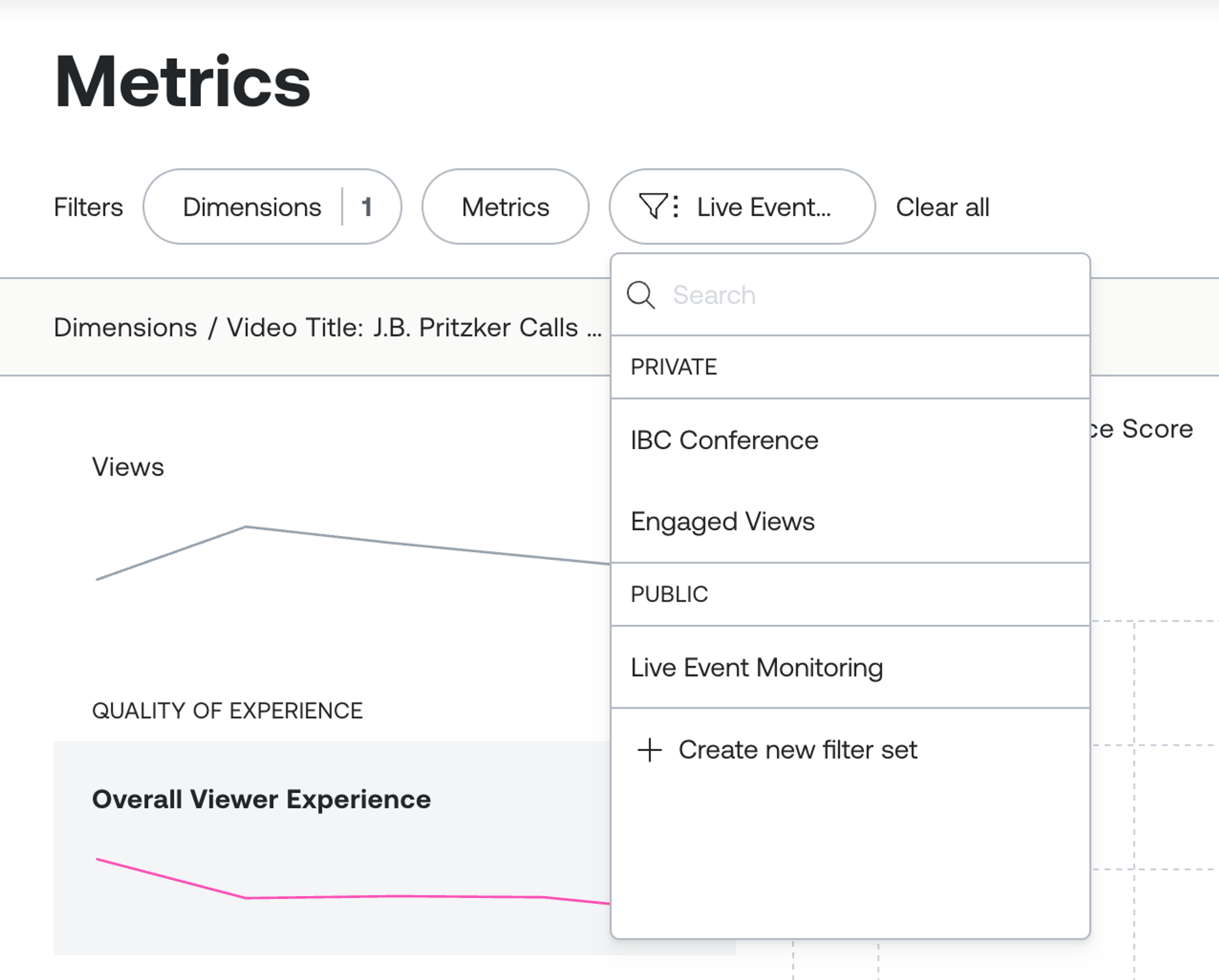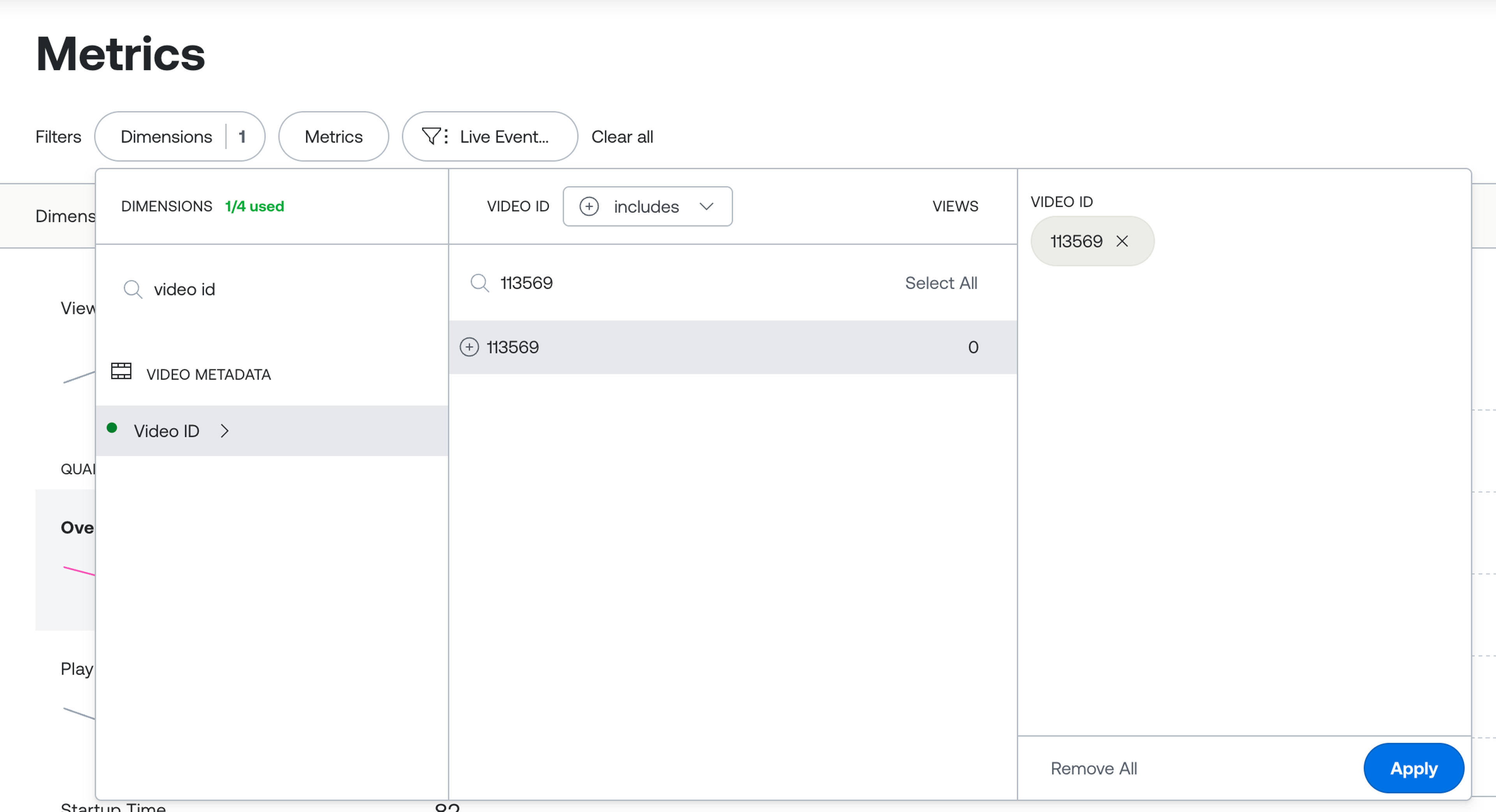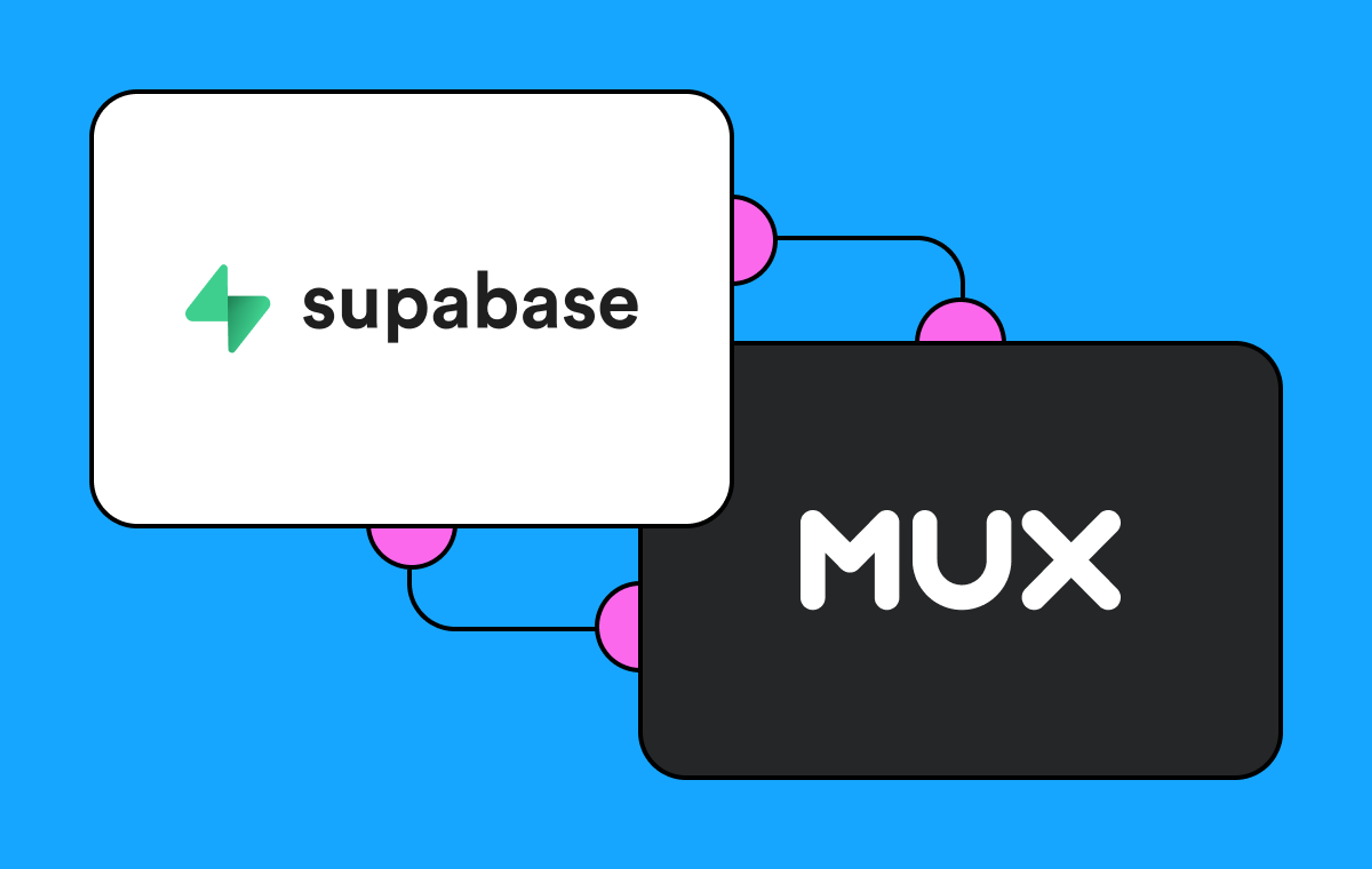You're monitoring a major live event this weekend. Your team in Tokyo is watching for rebuffering issues on mobile devices. The team in Dublin is tracking engagement metrics on smart TVs. Meanwhile, your ops team in San Francisco needs to monitor CDN performance across all platforms. Everyone needs differently filtered views of the same data — and they need to be absolutely sure they're looking at the right metrics.
Setting up these views means carefully selecting the same combination of filters or sharing Mux Dashboard links. One misclick on a filter and suddenly you're troubleshooting phantom issues in the wrong geography or wondering why you are seeing different metrics than a teammate.
That’s why we're launching filter sets in Mux Data. Filter sets are named, reusable collections of filters that ensure everyone on your team is looking at the exact data they need to see.
Define once, use everywhere
Filter sets let you save any combination of filters under a descriptive name and reuse them anywhere in Mux Data. Think of them as bookmarks for your data views that help you save the precise filtering logic for specific use cases.

Creating a filter set takes seconds. When you've applied filters to get the exact data view you need, just select "Create filter set" from the filter menu. The system automatically captures your current filters — you can adjust them if needed, give it a clear name, and save it as either public (for your entire environment) or private (just for you).
Here's what makes filter sets particularly powerful: they work across dimensions and metrics. You can filter by traditional dimensions like:
- Geography (country, region, city)
- Platform and device type
- Browser and operating system
- Custom dimensions you've defined
But you can also add metric-based filters to focus on specific quality thresholds:
- Only views with rebuffering > 2%
- Playing time > 10 seconds
- Startup time < 3 seconds
- Video upscaling ratio > 1.5
Combine these to create highly specific views. For example, a filter set called "Poor mobile experience APAC" might include:
- continent = 'Asia'
- device_category = 'mobile'
- rebuffering_percentage > 5%
- startup_time > 4000ms
Pre-staging filters for events that haven't happened yet
Here's something we're particularly excited about: you can create filter sets for content that doesn't exist in your data yet.
Planning coverage for next month's product launch? The Super Bowl? A new season premiere? You can manually enter video IDs or titles (or any other dimensions) that aren't in your dataset yet. They'll appear with zero views for now, but when the event goes live, your filters are ready to go. No scrambling to set up monitoring as traffic starts flowing — your operational dashboards are pre-configured and waiting.

This forward-looking capability simplifies how teams prepare for major events. Create your filter sets during planning meetings, share them with the team, and everyone knows exactly which view to monitor when it matters most.
Filters that follow you
Filter sets aren't confined to a single dashboard — they move with you as you navigate through all dashboards including Monitoring, Metrics, and Engagement. If a filter in your set isn't valid for a specific page (for example, a Metrics specific dimension when you're viewing Monitoring), it's temporarily disabled. Navigate back to where that filter is supported, and it automatically reactivates.
Just like with standard filters, filter set persistence means you can define comprehensive filter sets without worrying about compatibility across different dashboards. The system handles the complexity, you get consistent data views.
Real-world operational workflows
Let's look at how filter sets streamline actual workflows:
Multi-team event monitoring: You're streaming the Olympics across multiple regions and platforms. Create filter sets like:
- "Olympics - North America - Mobile" for the mobile team
- "Olympics - Europe - Smart TV" for the connected TV team
- "Olympics - Global - CDN Performance" for infrastructure monitoring
Each team selects their filter set and knows they're monitoring the right slice of data. No confusion, no misaligned metrics.
Engagement analysis with custom definitions: Your team defines an "engaged viewer" as someone who watches for at least 10 seconds. Create a filter set called "Engaged Viewers - US" with:
- "Engaged Viewers - US" country = 'United States' AND playing_time >= 10000ms
Now everyone analyzing engagement metrics uses the same definition. As you navigate between Overview, Metrics, and Engagement dashboards, this consistent definition follows you.
Quality of Experience Metrics: Set up filter sets for different quality tiers:
- "Rebuffer free views": rebuffering_percentage = 0%
- "Minimal rebuffering views": rebuffering_percentage < 3%
- "High rebuffering views": rebuffering_percentage >= 3%
Switch between these views instantly to understand where your experience falls on the quality spectrum.
Managing and organizing filter sets
Filter sets are fully searchable whether they're public or private. As your library grows, finding the right set is quick — search by name or browse the full list. When filter sets outlive their usefulness (goodbye "World Cup 2024 Monitoring"), deleting them is just as easy as creating them.
We've designed the feature to scale with your organization. Start with a few critical filter sets, then build out your library as patterns emerge. Share successful filter sets with your team by making them public, sharing a link, or keep experimental ones private until you've refined them.
Start building your filter library today
Filter sets are available now for all Mux customers. There's nothing to configure or enable — just start creating filter sets from any filtered view in your dashboard.
Your existing workflows continue exactly as before. Filter sets are purely additive — they give you a new way to save and share filtering patterns without changing anything about how filters currently work. Think of them as productivity shortcuts that eliminate repetitive filter configuration while ensuring everyone's looking at the same data.
Ready to eliminate filter configuration from your daily workflow? Head to any Mux Data dashboard, apply the filters you use most often, and save them as a filter set. If you have questions, check out our technical guide for more information. In a few weeks, you'll wonder how you ever managed without them.



